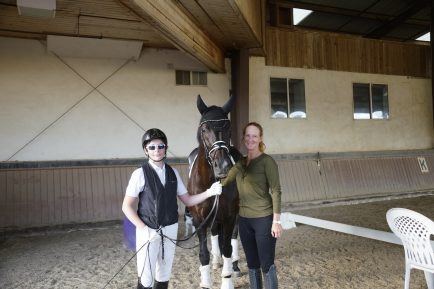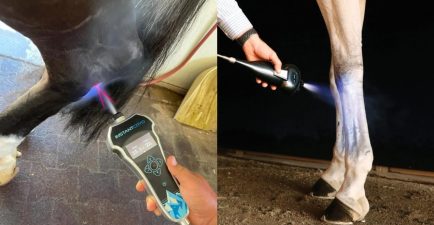Serious hobbies can be expensive, and few are quite as costly as horseback riding. Before you buy the farm — or at least part of it — check out these seven expenses that catch many first-time horse owners by surprise.
- The “free” horse that isn’t free
People who have enjoyed the occasional riding lesson may be lured into ownership when they see a cheap horse on the market. In some cases, a friend may offer up a “free” horse, which may sound like an amazing deal, but a free horse costs just as much to maintain as a $500,000 one, cautions Jackie Dwelle, instructor of equestrian studies at St. Andrews Presbyterian College in Laurinburg, N.C.
“I have had horses given to me before, and they cost an arm and a leg,” Dwelle says. “People may think they’re getting a great deal — and it may be a great deal right now — but it’s the long-term cost of a horse that you have to worry about.”
Also, remember that if the deal seems too good to be true, the horse may have problems.
“You really need to find a trainer before you find a horse — if you want to be able to ride your horse or compete with it one day, then you need a professional assessment of the animal. It may look beautiful, but unless you’re an expert, you don’t know if it’s Black Beauty or Black Devil.”
Before you buy or “rescue” a horse, Dwelle advises making contact with someone in the equine community who can guide you on your first experience.
- Boarding
If you don’t live near a pasture, you’ll need to board your horse. Typically, boarding includes food and water, stall cleaning and turning out — taking the horse out to pasture. Depending on your area of the country, boarding costs can range from $600 to $2,000 per month.
“The cost varies widely across the country, but near bigger cities, you’re looking at a minimum of $1,200,” says Dave Johnson, president and CEO of Phoenix, Arizona-based North American Equine Services.
Boarding may or may not also include grooming, shoeing and vaccinations for an additional charge. Make sure to ask those questions when looking at stables. Also, some stables offer what they call a “full board,” which means they’ll have the horse saddled up and ready to ride when you get there. This comes at an additional cost and requires making appointments for your rides, but for those who are pressed for time, it’s the only way to go, Dwelle explains.
- Routine health maintenance
The average horse has five core vaccinations every year, including for encephalitis, rabies, tetanus and West Nile. Horses that travel frequently or have more exposure to other horses will require more. The cost is between $100 and $200 per vaccination, per horse — and that doesn’t include the likely veterinary fee.
“Every time the vet comes to the stables, it will be anywhere from $50 to $100 just to show up,” Johnson explains. “That is an expense that most people aren’t prepared for.”
Horses also require intestinal parasite control. Regular treatment for parasites is required every eight to 12 weeks, and costs around $20 per treatment.
“We recommend establishing a good relationship with your vet so if anything happens, if you have an emergency, they will come out,” she says.
- A serious illness
Horses are unfortunately “very fragile” animals, Dwelle says.
“You’d think they were indestructible, but unfortunately they are very good at getting themselves hurt and sick,” she says. “Just like in human medicine, the expenses can mount up very quickly, and sometimes there aren’t real answers.”
Many horse owners love their horses so much, they will spend almost anything to see them cured, she explains.
“When the vet says to you, ‘If you spend $20,000 there is a 70% chance we can cure this,’ and you’re upset, it’s hard to make a rational financial decision,” she says. “I’ve been there before, and it took me a long time to pay off those bills.”
- When the horse gets old
“What are you going to do when you can’t ride and enjoy your horse? We have so many unwanted senior horses in this country, and lack of planning is a big reason why,” Dwelle says.
A typical horse can live anywhere from 30 to 45 years, but not all those years are good. Planning to buy a horse is great, Dwelle says, but planning what to do with it when it gets old is important as well. In a perfect world, everyone would set aside enough money to send their horse to a sanctuary where it can live out its last days in peace.
- Lessons and training
Depending on your area of the country, lessons and training for your horse can come at a “hefty” cost, Dwelle says.
“Some horses are very reactive, and it’s possible to get hurt in the blink of an eye. You can never completely train that out of them, but you can train them to be safer,” she says.
On average, lessons (an instruction session when you are present and riding the horse) and training (a session between the trainer and the horse) cost between $30 and $100 per half hour.
“If you have aspirations to ride at a high level, you will need a trainer with a lot of mileage under their belt, and that person will command a higher price tag than a kid who knows less,” she says.
Although in many cases your horse’s trainer could be your riding instructor, they don’t have to be. Also, as you improve your riding skills, you may find you need to upgrade trainers to progress.
- Shoeing and saddling
Just like there’s more to horse ownership than “saddling up and riding off into the sunset,” horseshoes are a lot more than just a backyard game, Dwelle explains.
All horses must be reshoed at least every four to six weeks, and the average cost is between $75 and $150 per horse, Johnson explains. With that said, shoeing can get more expensive if your horse has problems with its feet. It can cost as much as $400 every time they need new shoes, Dwelle cautions.
When it comes to the horse’s saddle and “tack,” don’t be shocked if the price tag is well over $1,000 for the saddle alone, cautions Gerri Detweiler, director of consumer education for Credit.com, whose daughter is an avid rider.
“Her used saddle cost us $1,600 and a good quality new one can run $3,000 to $5,000 or more,” Detweiler says.
That’s not including the bridle, reins, girth, saddle pads and blankets. Also, most professional riders will need clothes, including boots, half chaps, gloves and a helmet — the helmet alone can run $400 or more.
“Owning a horse can run as much as a mortgage or private school,” Detweiler says. “There is definitely a tradeoff. We could be saving a lot more for college if she didn’t have a horse, but it’s something she really loves.”
Original article: https://www.thestreet.com/story/12825020/1/the-real-cost-of-a-ride-7-expenses-first-time-horse-owners-arent-expecting.html


























Comments